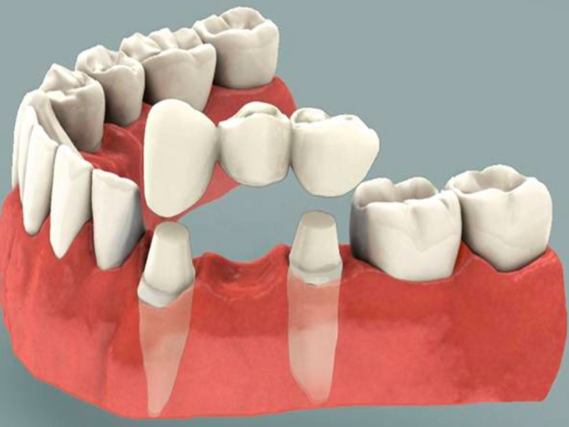
Dental bridges
Dental bridges are a procedure to replace a missing tooth. Missing teeth don’t only appear unsightly, but can also cause an irregular bite, gum disease, and remaining teeth to rotate or shift out of place.
A dental bridge is so called because it is used to bridge the gap created by a single missing tooth or multiple missing teeth. The gap is bridged by inserting an artificial tooth, known as a pontic, in the gap, which is anchored in place by attaching it to the teeth on either side of the gap, known as abutments, through the use of crowns.
A bridge is one of two options to deal with the problem of a missing tooth. The alternative to having a bridge fitted is to have a dental implant fitted. A dental bridge is only an option if the supporting teeth on either side of the missing one have sufficient strength to be able to support the bridge.
It is a fixed dental restoration, not a temporary, removable
one. Once it has been fixed in place, it can only be removed by a
dentist. With proper care and oral hygiene, the lifespan of a dental
bridge should be 10+ years.
The new artificial tooth will be made of metal, porcelain, or a combination of both, depending on the location of the tooth and its function. They can generally be matched to the colour of your natural teeth.
You’ll be given a local anaesthetic during the bridge preparation and fitting stages, and the procedure is no more painful or uncomfortable than having a dental filling. How many visits to our clinic it takes to have a bridge fitted is dependent on each individual’s specific case, however, normally 3-4 visits are required.